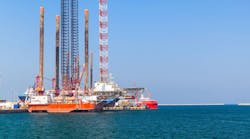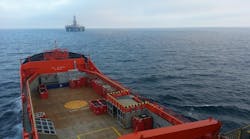OSV supply remains tight with limited orderbooks and an aging fleet, with owners prioritizing fleet upgrades over newbuilds. In the Middle East, 40% of active PSVs and 32% of anchor handling tug supply (AHTS) vessels are more than 15 years old. Orderbooks stand at 69 and 65 vessels for PSVs and AHTS vessels, respectively. Based on these figures, the sector is rapidly approaching an aging fleet issue, which could see owners forced into upgrading fleets or exiting the market. Saudi Aramco and ADNOC historically used vessel age as part of their chartering requirements, with limits of 15-20 years old, depending on vessel type. Due to the aging fleet, they have already been forced to make exceptions, however. If the market does slow, it will undoubtedly be these older vessels that are the first to lose out on contracts.
OSV charter rates continue to trend upward in 2025, amid tight supply and strong demand. MSI forecasts smaller 5-5.5 k BHP AHTS rates to increase 7.7% yoy in 2025 to $12.9 k per day. Post-2025 rates are forecast to decline due to AHTS deliveries adding to supply and stronger competition for contracts, resulting in a CAGR of -2% over the next five years. Several key projects are also due to reach completion in 2026/2027 as Qatar and the UAE hit production capacity targets.
The AHTS and PSV fleet is dominated by big players with one owner typically dominating each of the key countries:
- In the UAE, ADNOC leads the way with 62 vessels, 17 PSVs and 45 AHTS vessels;
- Rawabi Vallianz leads in Saudi Arabia with a fleet of five PSVs and 49 AHTS vessels; and
- Milaha dominates the Qatari market with 11 PSVs and 16 AHTS vessels.
Outside of these players, we see key international owners such as Tidewater and Britoil adding significantly to the Middle Eastern fleet. There are also more than 200 owners and operators in the Middle East making up a large and fragmented market outside of the Top 10 players. With this much fragmentation, MSI expects to see more consolidation, as owners look to add modern vessels to their fleets without having to pay for newbuilds.






